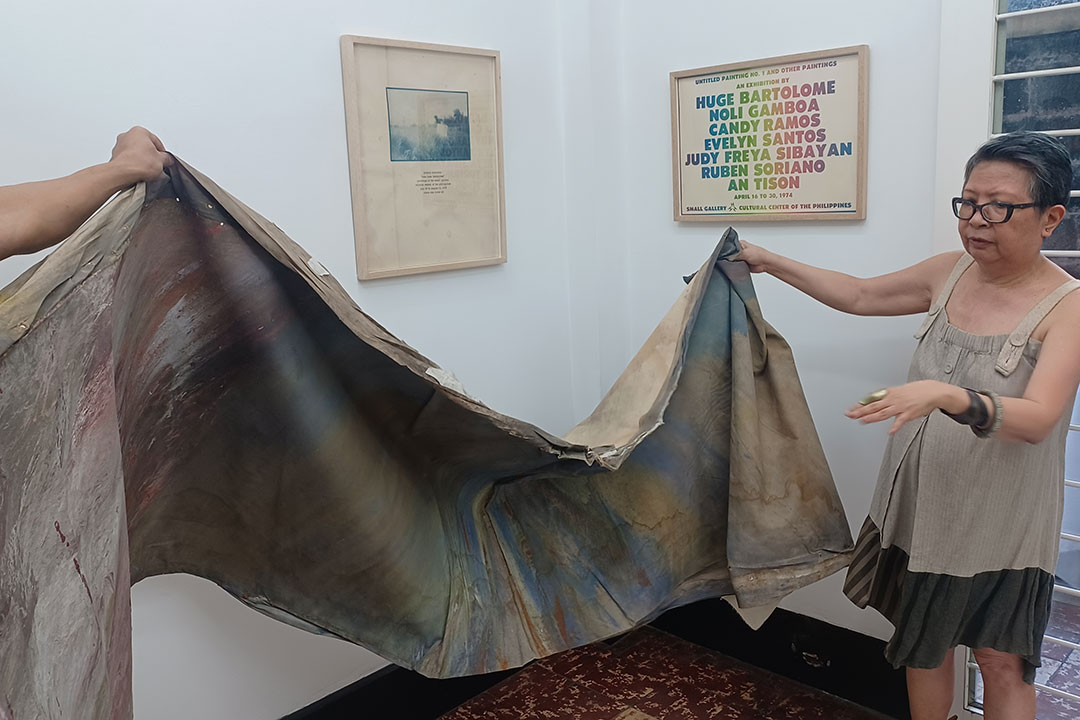Reframing art at Calle Wright

FOR conceptual artist Judy Freya Sibayan, finding a modest art collection worth exhibiting at a gallery was not something she expected while unpacking decades’ worth of personal archives.
She discovered posters, paintings, collages, and photographs of works by the likes of Huge Bartolome, Roberto Chabet, Ray Albano, and Johnny Manahan, among many others. These works now make up an enviable collection that serves as a vibrant documentation of the formative years of Philippine contemporary art.
Aside from a look back in history, they capture a time where many dared to reinvent art and rebel against its more traditional forms. The collection covers 16 years, hence the exhibit’s title Early Philippine Contemporary Art (1969-1985): Works and Documents from the Collection of Judy Freya Sibayan.
Its beginnings are inextricable from Mr. Chabet, the founder of the CCP Art Museum, and Mr. Albano, the museum director after him, who started writing about the art they exhibited as “contemporary.” Ms. Sibayan’s show maps out these interconnections, formed through shared exhibitions, collaborations, and discourse spanning conceptual art, installations, performances, and interactive and site-specific art.
“Not a single piece here is not from a Thirteen Artists awardee, because most of my early artmaking was in CCP (Cultural Center of the Philippines),” Ms. Sibayan told BusinessWorld, at the exhibit’s opening at Calle Wright on May 25.
“I haven’t shown in white cubes for a long time, so it takes me seven years to come back and put up a show. This show marks a lot of milestones,” she explained.
The exhibition’s opening began with Lemon Cake, where a lemon cake is placed on a table next to a metronome, and sliced up and served to guests — a performance last done in 1974, over 50 years ago. Afterwards, Ms. Sibayan performed Reframing Art, where she unrolled an old Johnny Manahan painting and effectively reframed it by unrolling it and tying it up on the wall to be displayed inside the gallery.
“It was seven years ago that I did my first installation performance in Calle Wright. It was a prayer for the survival and health of places like these, and true enough, it has survived and is very healthy and well, set to begin an artist residency with its three studios at the back,” she explained. “That’s another milestone.”
Unfortunately, the archive she had installed is set to be organized and packed up to donate to an institution abroad, which cannot yet be named. “It’s sad, but there’s no institution here that can accept it and give it the proper care it merits,” she told BusinessWorld.
In the meantime, visitors to Calle Wright can revel in this playful, radical side of art history for the next three months, including Ray Albano’s various posters, and notes shared between Ms. Sibayan and Huge Bartolome as part of their various performances.
“The creation of art is actually dependent on the agents within a cultural field, who create the belief that an object is valuable as art,” she explained. “There are levels to the definition of art.”
The exhibit aims to invite those who are curious about how Filipino artists began going beyond known forms of art, to explore the conceptual. Early Philippine Contemporary Art (1969-1985): Works and Documents from the Collection of Judy Freya Sibayan runs until Aug. 31 at Calle Wright, 1890 Vasquez St., Malate, Manila. — Brontë H. Lacsamana



